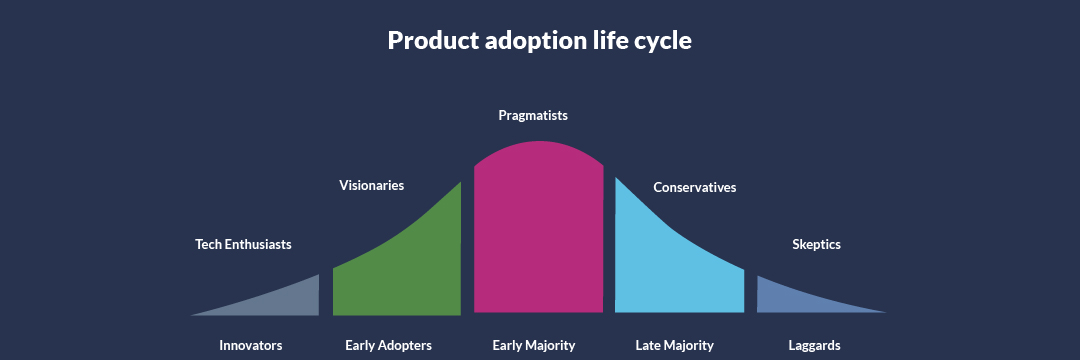To understand your product and customer simultaneously, one needs to understand how the product adoption cycle functions in a business. It should be noted that there are several variables at play, and no brand or product experiences the same process. This serves as a baseline and can be adapted according to your product and industry.
The adoption cycle starts out with a pre-design phase. During this phase, factors such as business reputation, competitive landscape, product pricing and supply & demand are considered and analysed.

Turn prospects into clients
This curve groups together customers according to their product responsiveness when new products are released. These groups are categorised as Innovators, early adopters, early majority, late majority and lastly, laggards. Each of these groups displays a unique set of characteristics which we will discuss below.
The innovators
This group of people are individuals that adopt innovative products and usually prefer alpha test products. These customers enjoy new, innovative products even if they’re unsure about how to use the product. They typically like to voice their opinions about your product and enjoy giving feedback to better improve the product they desire.
Early adopters
This type of customer forms a larger group than that of innovators. They are selective with their products, and their opinions are shared with a larger audience. Early adopters are the risk-takers and trendsetters. But before giving a final verdict, early adopters will draw data-driven comparisons of your product to those of your competitors. They will also address their pain points first before the product is adopted. It is for this very reason why businesses seek the approval of early adopters.
Early Majority
At this stage of the product adoption cycle, here is when your product starts gaining momentum. By now, you should have made a healthy amount of sales from the innovators and early adopters. Usually, the early majority then sweeps in and adopts the product, giving you more sales. This group insists on good references from friends, colleagues or family before they assume the product.
Late Majority
This group is known to be sceptical, adapting to new ideas and products very carefully. They can be seen as complacent, not wanting to change. Their product adoption might be stemming from the fact that they simply don’t have a choice anymore. Take cell phones as an example. Many older age segments simply refused to get one because it meant that they would need to learn how to operate the thing.
Laggards
Laggards are the traditionalist who is the last to adopt any form of innovation. They usually are considered suspicious and only embrace innovation when it has become somewhat of a tradition. This group can be households, organisations or individuals who simply refuse product adoption. Their traditional buying patterns form their main characteristic.

